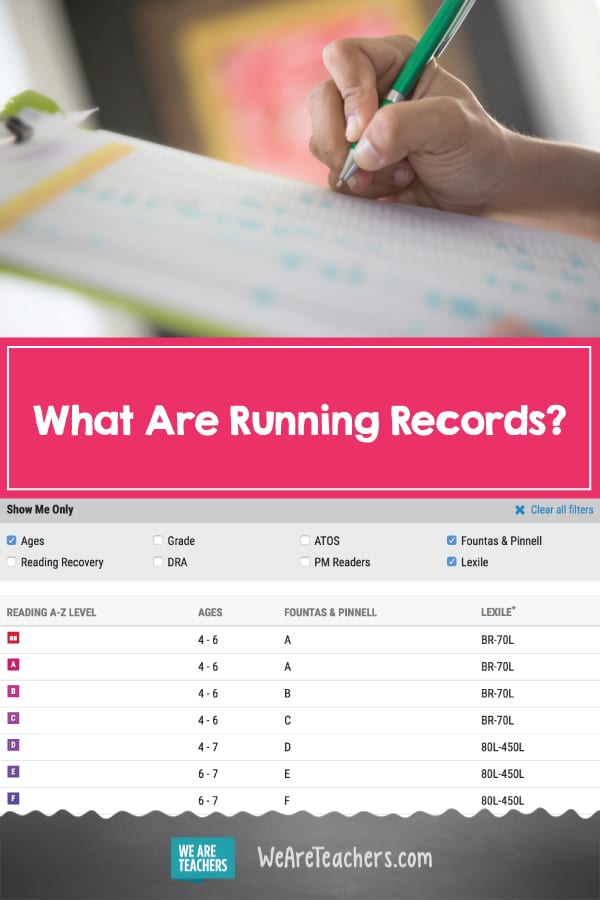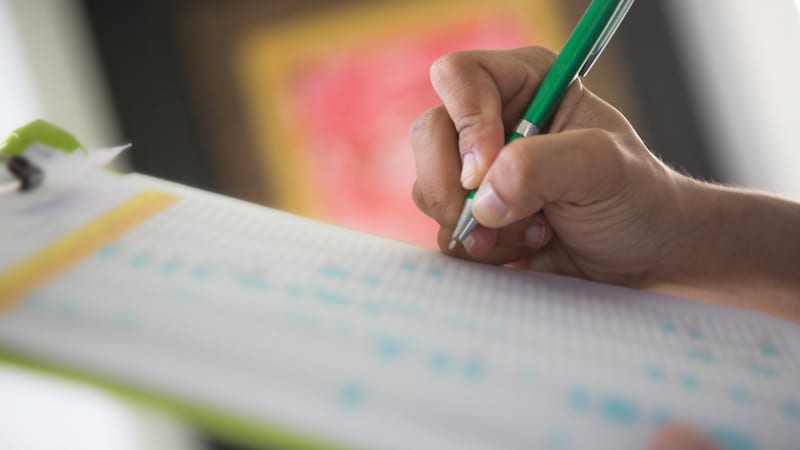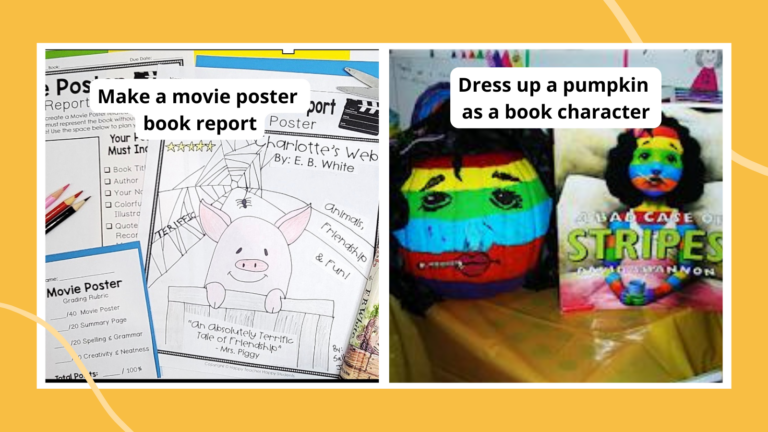Chances are, if you teach the primary grades, you have to do running records. But what are running records, and how do they help you teach reading? Never fear, WeAreTeachers is here to explain it all.
What are running records?
Running records fall under the reading assessments portion of your readers’ workshop. They’re part read aloud assessment (think: fluency assessment) and part observation. The goal of a running record is, first, to see how the student is using the strategies you’re teaching in class, and second, to find out if the student is ready to advance in a reading-level system if your school uses one (Reading A to Z, Fountas and Pinnell, and others). Thinking about instruction, when you combine a running record with some analysis, you can address student mistakes and plan their next steps.
When do I use running records?
Running records are used to collect information on young readers who are still reading aloud and working on basic skills (think: those who are at reading levels aa–J). A running record captures both how well a student reads (the number of words they read correctly) and their reading behaviors (what they say and do as they read). At the start of the year, or when you start working with a student, a running record can help match the student with books that are right for them. Then, you can use subsequent running records to track the student’s progress.
Once you do the first running record, the time in between running records will depend on how well the child is progressing and what level they are reading. An emergent reader (using Reading A to Z levels aa–C, for example) will be assessed every two to four weeks, while a fluent reader (level Q–Z) should be assessed every eight to 10 weeks. Essentially, students who are learning the fundamentals are assessed more often than students who are working on fluency and higher-order comprehension.
Here’s a sample running records assessment schedule from Learning A–Z.

[contextly_auto_sidebar]
Why do I do running records?
Proficient readers use what is happening in the text (meaning), knowledge of language and grammar (structural), and visual cues (words and word parts) to read. Beginning readers are learning how to do this, so running records provide a way to observe how they are approaching text.
For any text that a child reads, running records help you answer these questions:
- What is the child’s word reading and fluency? Or, can they read smoothly and accurately? (Get our free fluency posters here.)
- Are they able to self-monitor and correct their mistakes while reading?
- Are they able to use meaning, structure, and visual cues to understand what they read?
- What do they do when they come across a word they don’t know? (Check out our list of vocabulary games.)
- Are they using strategies that you taught in class?
- How are they improving in their reading over time?
How do I do a running record?
Every running record follows the same procedure:
- Sit next to the child so you can follow along with them as they read.
- Choose a passage or book that is at the student’s approximate reading level. (If you’re wrong on the level, you can adjust up or down to get the right fit. If you’re not focusing on level, choose something that the child is working on in class.)
- Tell the child that they will read out loud as you listen and jot some notes about their reading.
- As the child reads, keep a record by using a running record form (a typed paper of the same passage the student is reading). Mark the page by putting a checkmark above each word that is read correctly and marking errors. Here is an overview of how to mark miscues in a running record.
- While the student is reading, intervene as little as possible.
- Watch for how the student is using the strategies that you taught in class and pay attention to how the student is gathering meaning using structural, meaning, or visual cues.
- If the student gets stuck on the word, wait five seconds then tell them the word. If the student is confused, explain the word and tell them to try again.
- After the student reads the passage, ask them to retell what they read. Or, ask a few basic comprehension questions: Who was in the story? Where did the story take place? What happened?
- After the running record, conference with the student to provide praise (for self-correcting or using reading strategies) and constructive feedback (review errors and have them reread portions correctly).
Okay, I did the running record, now what?
Yay! You have all the data! Now it’s time to analyze it.
Calculate the accuracy: (number of words in the passage – number of uncorrected mistakes) x 100 / number of words in the passage. For example: (218 words – 9 errors) x 100 / 218 = 96%.
Use the student’s accuracy rate to put them in a reading level. As a general rule of thumb, if a child can read 95–100 percent of the words in a text correctly, they can read independently. When they are reading 90–94 percent of words correctly, they are reading at instructional level and will need teacher support. If a child is reading less than 89 percent of the words correctly, it’s likely they’re not reading enough words to understand the text fully.
If students are reading at an independent level (95 percent accuracy and higher) and have strong comprehension (they have a strong retelling or answer 100 percent of the comprehension questions correctly), then they are ready to advance to another reading level.
Use this running records tip sheet for more information on how to use running record data to plan instruction.
This sounds like a lot of work. How do I keep it organized?
- Create a schedule for assessing students. Assign each student a day of the week or month to make sure each student has a running record that is updated regularly.
- Keep a data notebook with a section for each student that includes their running record. A running record should show that students are reading at a higher level, and with increased accuracy.
- Set a goal with students. Set an annual goal around the reading behavior they want to strengthen, the level that they need to be reading on, or the number of levels they would like to advance. At each conference, talk about how they are progressing toward the goal and what they can do to improve between running records.
Get more resources on running records:
- Watch a running record to get an idea of how one teacher implements it.
- Information about reading fluency and how to support it in the classroom
- Teacher hacks to make data collection easy
Ask questions and share your advice for running records in our WeAreTeachers HELPLINE group on Facebook.


